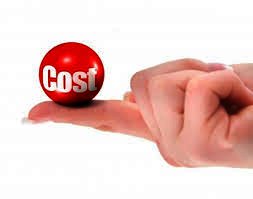
Among the central issues in macroeconomics is the nature of short run inflation dynamics. This matter is also one of the most fiercely debated, with few definitive answers available after decades of investigation. At stake, among other things, is the nature of business cycles and what should be the appropriate conduct of monetary policy.
In response to this challenge, important advances have emerged recently in the theoretical modeling of inflation dynamics. This new literature builds on early work by Fischer (1977), Taylor (1980), Calvo (1983) and others that emphasized staggered nominal wage and price setting by forward looking individuals and firms. It extends this work by casting the price setting decision within an explicit individual optimization problem. Aggregating over individual behavior then leads, typically, to a relation that links inflation in the short run to some measure of overall real activity, in the spirit of the traditional Phillips curve. The explicit use of microfoundations, of course, places additional structure on the relation and also leads to some important differences in details. Rather interesting to know that peoplle may borrow money in the Internet banks being famous because of their speedy payday loan. They may borrow any amount of money without much information.
Despite the advances in theoretical modeling, accompanying econometric analysis of the “new Phillips curve” has been rather limited, though with a few notable exceptions. The work to date has generated some useful findings, but these findings have also raised some troubling questions about the existing theory. As we discuss below, it appears difficult for these models to capture the persistence in inflation without appealing either to some form of stickiness in inflation that is hard to motivate explicitly or to adaptive expectations, which also poses difficulty from a modeling standpoint. In addition, with quarterly data, it is often difficult to detect a statistically significant effect of real activity on inflation using the structural formulation implied by theory, when the measure of real activity is an output gap (i.e., real output relative to some measure of potential output). Failure to find a significant short run link between real activity and inflation is obviously unsettling for the basic story.
In this context, we develop and estimate a structural model of the Phillips curve. Our approach has three distinctive features. First, in the empirical implementation, we use a measure of real marginal cost in place of an ad hoc output gap, as the theory suggests. As will become apparent, a desirable feature of a marginal cost measure is that it directly accounts for the impact of productivity gains on inflation, a factor that simple output gap measures often miss. In this respect, our approach is complementary to Sbordone (1998), though she uses a different methodology to empirical assess 
As we show, several results stand out and appear to be quite robust: (a) Real marginal costs are indeed a statistically significant and quantitatively important determinant of inflation, as the theory predicts; (b) Forward looking behavior is very important: our model estimates suggest that roughly sixty to eighty percent of firms exhibit forward looking price setting behavior; (c) Backward looking behavior is statistically significant though, in our preferred specifications, is of limited quantitative importance. Thus, while the benchmark pure forward looking model is rejected on statistical grounds, it appears still to be a reasonable first approximation of reality; (d) The average duration a price is fixed is considerable, but the estimates are in line with survey evidence.
Taken as whole, our results are supportive of the new, theory-based Phillips curves. But they also raise a puzzle. Traditional explanations of inertia in inflation (and hence the costs of disinflations) rely on some form of “backwardness” in price setting. To the extent this backwardness is not quantitatively important, as we seem to find, the story needs to be re-examined. In our view, the “black box” to investigate is the link between aggregate activity and real marginal costs. To the extent they are reasonably characterized by unit labor costs, real marginal costs tend to lag output over the cycle rather than move contemporaneously, in contrast to the prediction of the standard sticky price macroeconomic framework. In this respect, our analysis suggests that a potential source of inflation inertia may be sluggish adjustment of real marginal costs to movements in output. We elaborate on this possibility in the conclusion. As a way out from finantial troubles you may check out the web site where you will find all the information about speedy payday loan to ease the procedure of earning money.
The paper proceeds as follows: Section 2 reviews the basic theory underlying the new Phillips curve and discusses the existing empirical literature. We make clear why specifications based on the output gap are likely to be unsuccessful. Section 3 then presents estimates of the new Phillips curve using a measure of real marginal cost, and shows that with this specification the theory does a reasonably good job of describing the data. To explore further the issue of how well the theory captures the inertia in inflation, section 4 extends the model to allow for a subset of firms that use rule of thumb behavior. It then presents estimates of the resulting augmented Phillips curve and a variety of robustness exercises. In addition, we construct a measure of “fundamental inflation” based on the solution to the estimated model that relates inflation to a discounted stream of expected future marginal costs, as well as lagged inflation. We in turn show that this measure does a good job of describing the actual path of inflation, including the recent period. Section 5 concludes.
